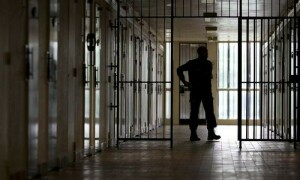LAHORE: Projecting an addition of 12.6 million in the existing population of the provincial metropolitan in the next 28 years, the Draft Master Plan of Lahore Division-2050, envisages housing and accommodation of around nine million people within the administrative boundaries of Lahore city district and the remaining 3.6m outside it, Dawn has learnt.
“The planning policies adopted for the preparation of master plan propose to accommodate approximately nine million people (of the total 12.6 million projected population) within administrative boundaries of Lahore district, while allowing very limited horizontal expansion adjacent to existing urban areas. Since any further adjustment of population will affect green area of Lahore district, the remaining 3.6 million people, as per the plan, will be accommodated outside the administrative boundary of Lahore district on the northern side,” reads the draft master plan, which will be presented for approval before the Lahore Development Authority (LDA) governing body in an upcoming meeting.
It states that since the future development in Lahore and the districts of Kasur, Nankana Sahib and Sheikhupura will be in accordance with the policies of the government at national and provincial level, the LDA, in principle, has approved the proposed planning policies/scenarios subject to the condition that all further actions will be taken as per law, rules and policy in vogue and in consultation with all stakeholders.
It says that in the light of sub-rule 5 (a) of LDA Master Plan Rules 2014, detail land-use survey was conducted using high-resolution satellite images and filed visits. Sample household surveys using questionnaires were conducted throughout the Lahore division to get updated information about demography, housing, social services, environment and transport etc.
For transport sector, earlier studies, especially those conducted by JICA (Japan International Cooperation Agency) were reviewed and different types of surveys, including manual classified counts, roadside interviews/cordon surveys, journey time/speed surveys, road inventory surveys, public transport user interview survey, passenger interview surveys, parking studies etc were conducted.
For environment analysis, pre and post-monsoon data was collected using primary surveys and was also reviewed in the light of secondary data from relevant departments.
Census data from Pakistan Bureau of Statistics was studied to project future population up to 2050, and after analysis of past trend, migration, reduced fertility rate, it was projected that population of Lahore division will be 37.71 million, including 25 million of Lahore alone.
The plan envisages creation of jobs, boosting economic growth considering importance of Lahore as Punjab’s financial and economic hub. In terms of achieving a balanced economy, the key strategic objectives of economic development identified and being pursued in the master plan focus on the 6 E’s -- emboldening SMEs and entrepreneurship, enabling the circular economy, encouraging private investors, enhancing infrastructure reliability, engaging with and supporting local opportunities and empowering youth, women and people with disabilities.
Using modern concept of neighbourhood planning, it proposes more uniform distribution of facilities to improve access for all residents and to reduce the need to travel, thereby reducing traffic congestion. The approaches adopted for zoning include densification and mixed used development along structure plan roads that identifies that many of the residential areas of Lahore district, particularly towards the south, have low population densities and the master plan has identified broad areas where densities can be increased without a reduction in quality of life for residents. It proposes a buffer zone of nearly 500m adjacent to each structure road context and existing building, like institutional, social facilities, graveyards and parks within which commercial, business and apartment buildings are permitted, with different percentages according to a location. On some roads, like the Canal Road or sections of The Mall, only public-realm interventions are recommended without any densification measures. The 500m buffer zoneis based on a walking distance to reach the bus lines and stations which are planned to be implemented along the main structure roads, to enhance mobility and provide accessibility to alternative modes of transit to private cars.
It proposes zoning of informal areas into neighbourhoods comprising around 10,000 people. These neighbourhoods will form the basis for the provision of community facilities, commercial activity and services to meet the day-to-day needs of residents. Improvements will also be made in access points to facilitate integration with neighbouring areas and improve residents’ ability to access employment and higher-level services, and reorganise/relocate unauthorised commercial activities.
The draft mentions that Transit Oriented Development (TOD) principles are being applied to a number of the main stations along the Orange Line as the same increases the density of development within 500m of these stations by permitting additional height and promoting mixed used schemes. TOD also identifies way to improve the streets around the station to encourage walking and increase the attractiveness of using public transport. As other metro lines are constructed, the plan provides for stations to be identified that are suitable for TOD.
A pilot project has been identified at Thokar Niaz Baig, for which a conceptual design plan and guidelines have been developed, illustrating how an area around a main metro or BRT station can be restructured.
Matters to be addressed through regeneration, according to the draft master plan, include high unemployment, low-income households, ownership concerns/conflicts, urgent needs (health/security/well-being), living conditions, dilapidated buildings, lack of infrastructure and utilities, low quality public realm, slum conditions, informal/uncontrolled growth, safety concerns (environmental and structural) etc.
Published in Dawn, March 29th, 2022














































